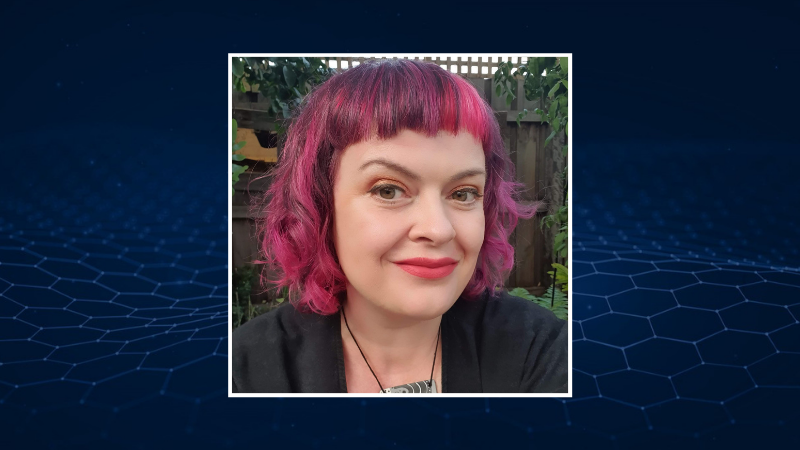
5 minutes with Lead User Experience Designer at Melbourne Water & Chair, Kaleidoscope Disability advocacy network
3 December 2021
- Erin Beel talked about how to get started with Diversity and Inclusion (D&I) and ways to get the entire company on board with D&I initiatives.
- She discusses digital accessibility experience and how she became the winner of the state 2020 Enablers Change Maker Award.

Q: What is your biggest piece of advice for getting started with Diversity and Inclusion (D&I)?
Educate yourself. This doesn’t necessarily mean reading stacks of books. Try starting small and follow a few activism and human rights groups on social media.
Reflect on yourself. Realise the privileges you live with and start to explore and challenge your unconscious biases.
Listen. Approach every interaction with another person with curiosity and respect. Put your judgements aside and let the other person speak.
Q: How do you get the entire company, including your leadership team, on board with D&I initiatives?
Start with the right mindset and understand how cultural change works.
Change takes time. Sometimes, a lot of time!
Meet people where they are at. Not everyone has the same level of knowledge or life experience that you have. Seek to understand what their interests are, their level of D&I knowledge and let that shape your approach to that individual.
Recruit allies – people who you can support your cause and support you. Don’t take on something like this entirely on your own.
Once change starts happening, it takes work to keep it at that level. Lean on your allies and start creating systems and processes to ensure change doesn’t slip back.
Finally, change isn’t always linear. It can be frustrating and it can feel like you’re making no progress. You’ll have setbacks. There might even be tears. And then, other times, you’ll have a series of huge wins and feel on top of the world.
Q: Could you please tell us more about how you became the winner of the state 2020 Enablers Change Maker Award?
Before I worked at Melbourne Water, I worked for a University as a Front-end designer and developer. The University had a high standard and culture of digital accessibility and I had to ensure all the work I made was accessible. When I came to Melbourne Water, I thought we could apply these same standards to the organisation.
At the end of my first year, I attended the International Day of Disability event.
I really enjoyed it and felt inspired and energised. Afterwards, I plucked up my courage and approached the host, Eamonn Kelly (who is our General Manager, Major Program Delivery and Chair of the Accessibility working group), to introduce myself. I said that I knew a bit about digital accessibility and to get in touch if that was of use.
Eamonn did get in touch, and a few days later, I was asked to join the accessibility working group to represent Information Technology.
As a member, I contributed to our next Accessibility Inclusion plan and we drafted bold digital goals. Since I knew a bit about it, I offered to take on driving the goals for Information Technology.
From there, I created business cases and educated myself about digital accessibility. I made lots of friends and allies in the business and accessibility community. I joined Kaleidoscope, our Employee Advocacy group, as a member, of which I now chair. I joined Waterable and the Victoria Public Service Enablers group.
I still don’t consider myself as an expert in accessibility. But what I’ve realised, is that in other peoples’ eyes, knowing that little bit more means I am an expert to them, and that you don’t need to be an expert in order to make a difference.
So, to answer your question, I became the change maker by taking that one first, small step, realising I knew a little bit and I am offering to help.
Q: What is one thing we can do to positively impact diversity and inclusion?
Do something small, do it today and keep doing it. Here’s some ideas:
- Accessibility - check a document before it’s published
- Call out bad behaviour when you next see it
- At your next team meeting, put a D&I topic on the agenda, and make it a regular conversation point
- Put your pronouns on your email
- Genuinely listen in your next conversation
- Put aside judgement and demonstrate care, compassion, and empathy
Representation matters.
Leadership needs to support it and foster it, both culturally and financially. It’s great to support D&I, but support must lead to tangible action.
Leadership also needs to set the example for the rest of the organisation. Right now, approximately 30% of ASX board members are women and that percentage is growing, which is great.
Melbourne Water is very active in this space – in fact, the business has recently appointed its first female Managing Director in Dr Nerina Di Lorenzo, who is an inspiring leader in Victoria’s public sector.
But equality there is just the beginning.
Culturally diverse individuals are vastly underrepresented in leadership of the public and private sectors, as well as people with disability, gender identity, age, sexual orientation and the list goes on.
For substantial change to happen, it must come from the top and be represented at the top.
